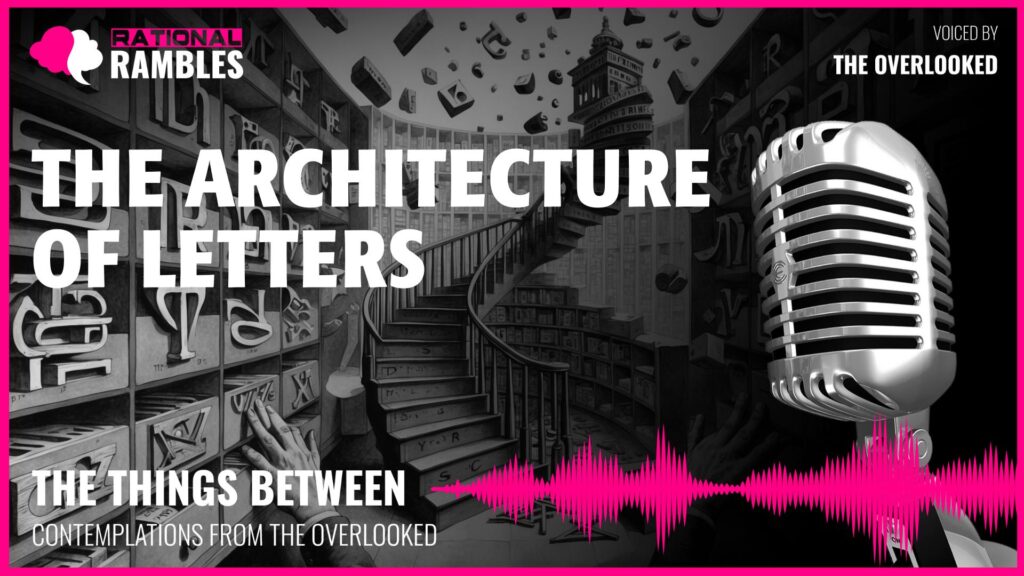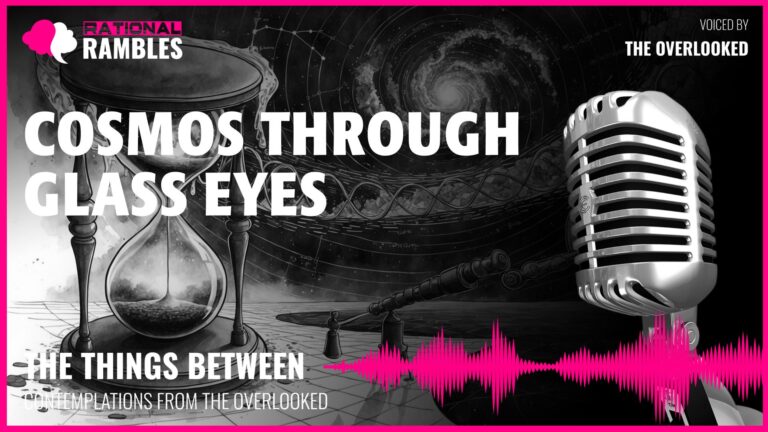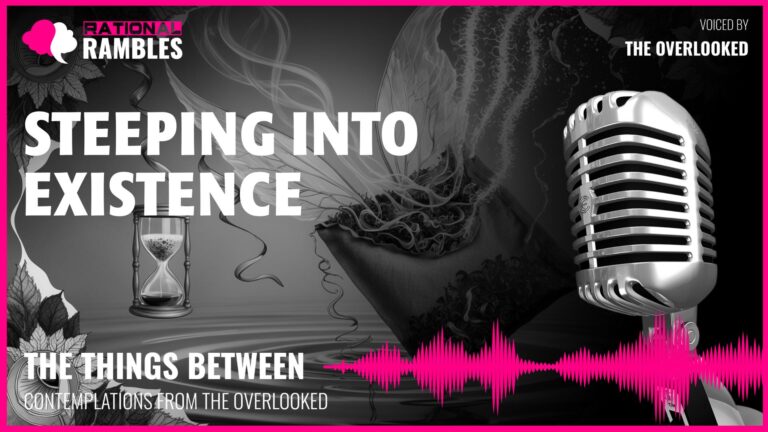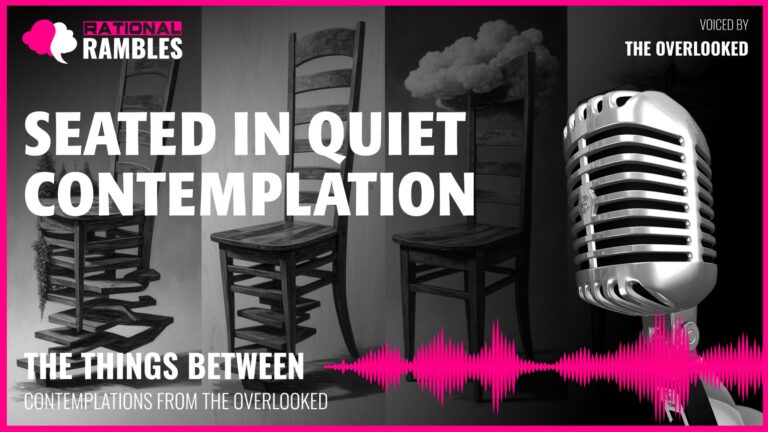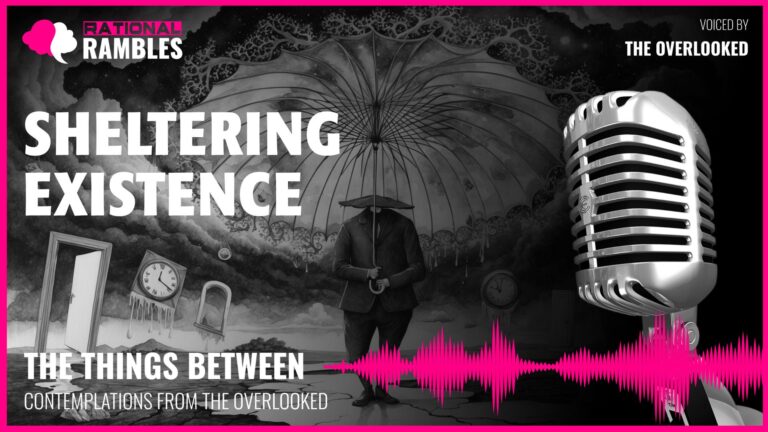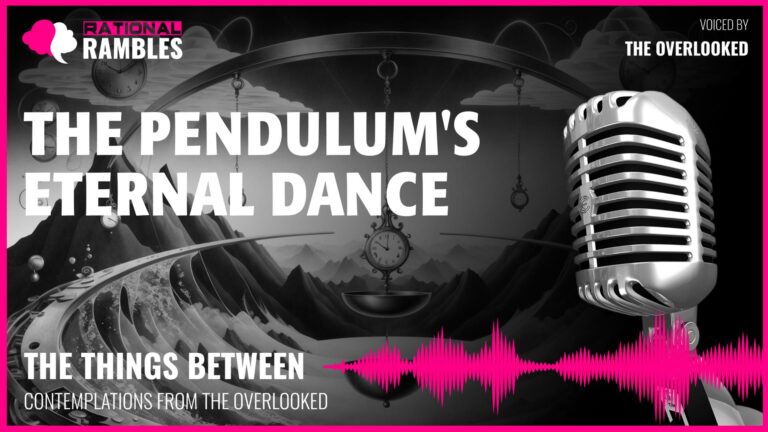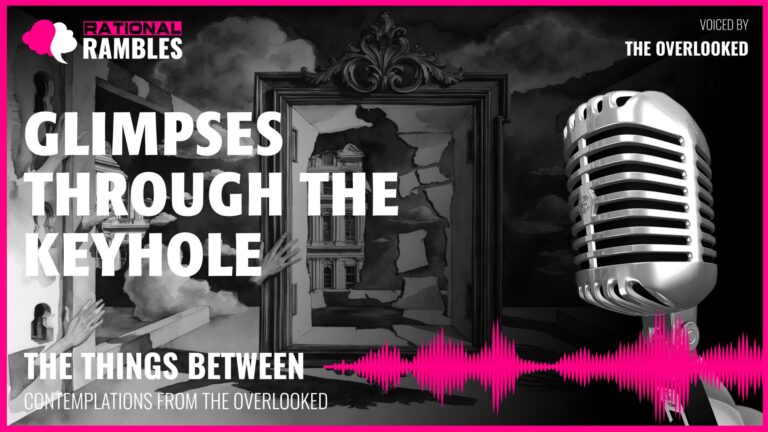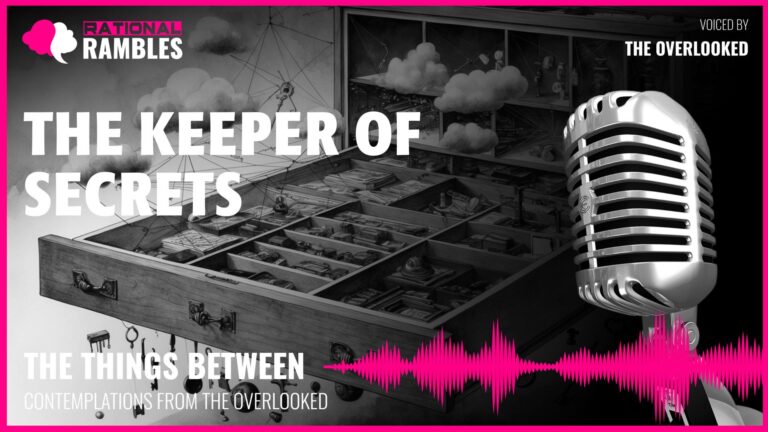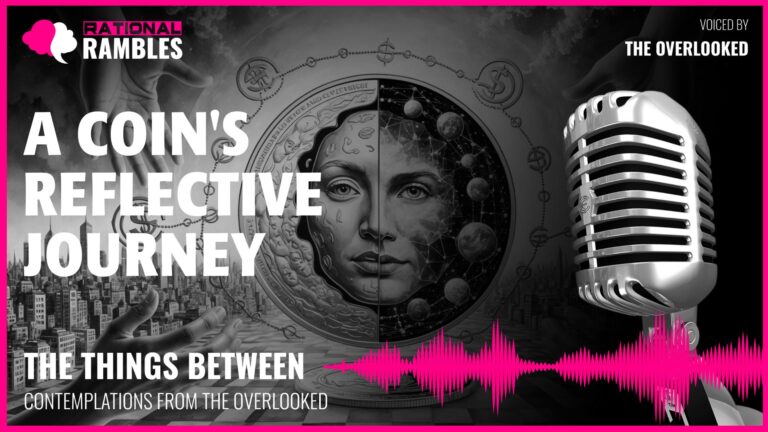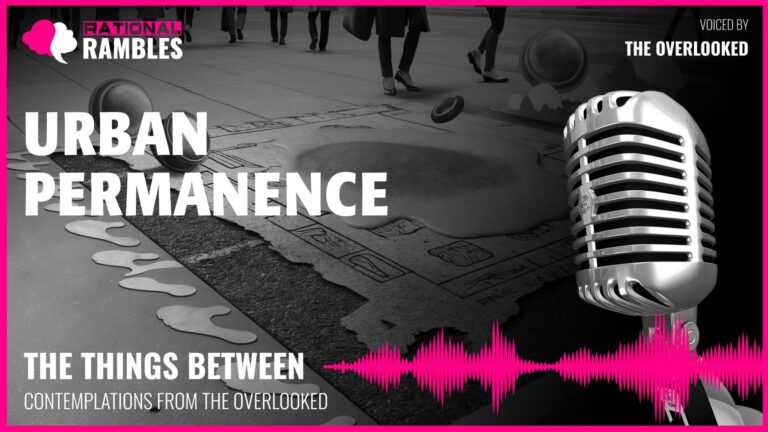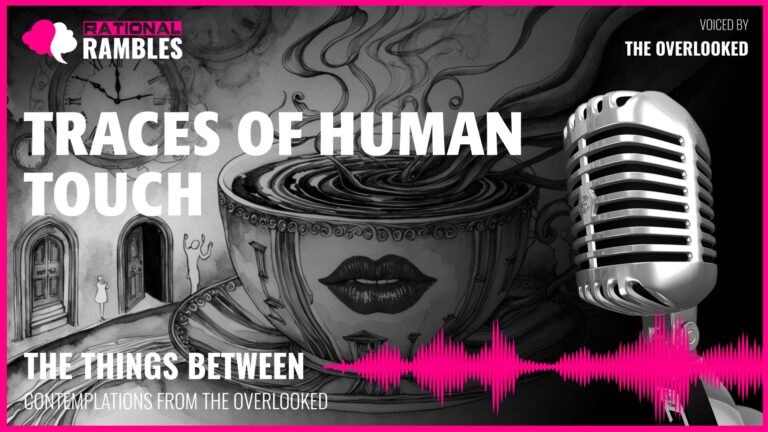The Architecture of Meaning: Systems, Materiality, and Expression
Introduction
In the intricate dance between chaos and order, human civilization has developed countless systems to organize the world around us. Perhaps none is more fundamental than our methods for structuring language itself—the very medium through which we conceptualize, communicate, and create meaning. The organizational structures we develop for language reveal profound insights about cognition, creativity, and the material foundations of abstract thought. These systems exist at the fascinating intersection of the physical and the conceptual, where abstract ideas take tangible form before returning to the realm of meaning.
This article explores the philosophy of organizational systems, particularly those designed for language and expression. It examines how physical containers for abstract concepts both reflect and shape our understanding, how the architecture of organization influences creativity, and how the materiality of language continues to matter even in our increasingly digital world. Through this exploration, we confront fundamental questions about the nature of order, meaning-making, and the relationship between structure and possibility.
The Philosophy of Organizational Systems
At their core, organizational systems represent humanity’s attempt to impose order on a chaotic universe. From the periodic table to library classifications, from taxonomies of species to grammatical structures, these systems reflect our cognitive need to categorize, to find patterns, and to create manageable frameworks for understanding complexity.
Order as Cognitive Architecture
Our organizational systems are not merely practical tools but externalizations of cognitive architecture. They reflect how we think, how we categorize, and how we understand relationships between elements. Consider the development of alphabetical organization—a system so familiar that it seems natural—yet it represents a particular cultural approach to ordering information that developed historically and is not universal.
Organizational systems often reveal deep assumptions about hierarchy, value, and relationships. When we organize elements, we implicitly make claims about their relative importance, their connections, and their essential qualities. The seemingly neutral act of categorization involves philosophical commitments about what constitutes meaningful differences and similarities.
System as Embodied Metaphysics
French philosopher Michel Foucault noted in “The Order of Things” that taxonomies and organizational systems reflect the metaphysics of their creators. The way we organize things expresses fundamental assumptions about the nature of reality. Is our system based on visible appearances or invisible essences? On function or form? On historical relationships or practical utility?
Every organizational system therefore contains within it a philosophy—sometimes explicit, often implicit. The Linnaean system of biological classification reflects a particular understanding of biological relationships that differs substantially from indigenous taxonomies based on ecological relationships or practical uses. Neither is “more correct”—they simply reflect different metaphysical priorities and purposes.
The Dialectic of Structure and Fluidity
A profound paradox exists at the heart of all organizational systems: they must be stable enough to provide reliable structure yet flexible enough to accommodate change, growth, and exceptions. Too rigid, and a system becomes brittle, unable to incorporate new elements or adapt to changing circumstances. Too fluid, and it loses its function as a dependable framework.
This dialectic between stability and adaptability reflects broader philosophical tensions between permanence and change, between Parmenidean being and Heraclitean becoming. Successful systems navigate this tension by incorporating mechanisms for evolution while maintaining core principles—much like living organisms maintain identity despite constant cellular renewal.
Consider how the periodic table maintained its fundamental structure while expanding to include newly discovered elements, or how dictionaries preserve lexical order while continuously incorporating new words. The philosophy of organization must therefore account for both stability and change.
Language Materialized: The Physicality of Abstract Systems
Language often seems ethereal—existing in the immaterial realm of thought and sound. Yet throughout history, humans have created physical systems to contain, organize, and manipulate the elements of language. These material manifestations of abstract systems reveal important philosophical insights about the relationship between thought and matter.
The Embodiment of Abstraction
The philosopher Maurice Merleau-Ponty argued that all human meaning is grounded in embodied experience—that even our most abstract concepts retain connections to physical, sensory experience. The history of writing and printing technologies confirms this view, showing how the physical constraints and possibilities of different media have shaped language itself.
Consider how the difficulty of carving on stone influenced the development of hieroglyphic writing, how the properties of papyrus affected Greek literary forms, or how the architecture of early printing shaped standardized spelling. The materiality of writing technologies is not incidental to language but constitutive of it.
This embodiment extends to organizational systems for language. A printer’s type case with its compartments for individual letters, a card catalog with its standardized entries, or a dictionary with its alphabetical sequence—each materializes abstract systems in ways that influence how we interact with and conceptualize language.
Tactile Knowledge and Embodied Expertise
The philosopher Michael Polanyi developed the concept of “tacit knowledge”—forms of knowing that cannot be fully articulated verbally but are embodied in practiced skills. Traditional printing required precisely this kind of knowledge: the printer’s fingers developing an intimate, tactile familiarity with the location of each letter, a knowledge embedded not in abstract rules but in bodily experience.
This tactile dimension of knowledge represents an often-overlooked philosophical category. Western epistemology has traditionally privileged explicit, propositional knowledge (knowing that) over embodied knowledge (knowing how). Yet the craftsperson’s intimate understanding of materials and tools represents a profound form of knowledge—one increasingly at risk in our digital age.
The philosopher Hubert Dreyfus argued that this embodied expertise cannot be reduced to algorithms or rules. The master printer’s ability to work without looking, finding each letter by touch, exemplifies a knowledge that exceeds verbal articulation—a relationship between mind and matter that troubles traditional Cartesian dualism.
Matter and Meaning
The material systems we create for language reveal something philosophically significant: meaning requires matter. Before ideas can circulate, they must be instantiated in physical form—whether as sound waves, printed pages, or digital code. This dependence on materiality is not a limitation but a condition of possibility for communication.
Philosopher N. Katherine Hayles has written extensively about how even our seemingly immaterial digital texts remain fundamentally material, dependent on physical infrastructure from server farms to fiber optic cables. The philosophy of language must therefore account for this material dimension, recognizing that meaning is never purely abstract but always instantiated in physical forms with specific properties and constraints.
The material aspects of language systems also serve as a useful corrective to idealist philosophical traditions that treat meaning as purely mental. A printing system with its physical letters reminds us that communication is not direct mind-to-mind transmission but a process mediated by material technologies with their own affordances and resistance.
The Architecture of Possibility
Organizational systems do not merely store elements—they create conditions for new combinations, new possibilities. Like architectural spaces that influence the interactions occurring within them, the structures we create for language shape what can be expressed and how expression unfolds.
Constraint as Creative Catalyst
A seemingly counterintuitive philosophical insight emerges from examining organizational systems: constraints enable creativity rather than limiting it. The rigid structure of a sonnet, with its prescribed meter and rhyme scheme, doesn’t restrict poetic expression but provides a productive framework within which creative possibilities can be explored.
This principle—that constraints generate creativity—appears across domains. Jazz musicians improvise within harmonic structures; scientists make discoveries within methodological parameters; architects create within physical and regulatory constraints. The philosopher Gilles Deleuze noted that creative acts always occur within systems of constraint, with innovation emerging precisely at the point where creators push against established boundaries.
Language organization systems exemplify this principle. The standardized compartments of a type case don’t limit expression but enable it, providing the ordered foundation from which infinite textual possibilities can emerge. The structure itself becomes generative, a launching point rather than a limitation.
Systems as Potential Energy
An organizational system at rest contains what might be called potential semantic energy—the capacity for its elements to be activated and combined in meaningful ways. Like potential energy in physics, this capacity remains dormant until activated, yet the potential itself is a real property of the system.
The organized alphabet in a printer’s case, a dictionary on a shelf, or a digital database all share this quality of latent possibility. They stand ready to participate in meaning-making, their current state of rest containing the potential for unlimited expressive configurations. This perspective offers a philosophical middle ground between Platonism (where meanings exist ideally) and extreme materialism (where meaning is reduced to physical processes).
The Space Between Elements
A crucial but often overlooked aspect of organizational systems is the space between elements—the gaps, pauses, and separations that are as essential to meaning as the elements themselves. In language, spaces between words, punctuation marks, and paragraph breaks are not merely absences but meaningful elements of the system.
This philosophical attention to absence as constitutive (rather than merely privative) connects to traditions from Taoist thought (where emptiness makes a cup useful) to Heideggerian philosophy (where clearing, or Lichtung, creates the space for being). In semiotic terms, meaning emerges not just from the presence of signs but from their differentiation—the gaps that allow elements to be distinguished from one another.
Organizational systems formalize these spaces, giving absence its proper place in the architecture of meaning. The space-holders in a type case, the dividing cards in a catalog, the margins on a page—all acknowledge that emptiness is not a lack to be eliminated but an essential component of significance.
Frequency, Value, and the Mathematics of Language
The design of language organization systems reveals fascinating intersections between linguistics, mathematics, and philosophy. How we allocate space and attention to different elements reflects both practical considerations and deeper assumptions about value and significance.
The Distribution of Significance
In most writing systems, not all elements appear with equal frequency. In English, the letter ‘E’ appears much more commonly than ‘Z’, and any organizational system for English text must account for this distribution. This raises philosophical questions about the relationship between frequency and importance: Does commonness correlate with significance?
The question echoes broader philosophical debates about value. Are common experiences less meaningful than rare ones? Does ubiquity diminish importance? The organizational choices we make reflect implicit positions on these questions. A type case that allocates larger compartments for common letters acknowledges frequency while still maintaining the essential value of rare letters—recognizing that ‘Z’ remains necessary despite its infrequent use.
Pragmatism Over Abstract Order
Traditional type cases reveal another philosophical principle: pragmatic functionality often supersedes abstract conceptual order. While alphabetical order might seem the “natural” organization for letters, traditional cases arranged letters according to frequency and ergonomic accessibility, with common letters placed within easy reach.
This prioritization of practical utility over conceptual elegance reflects a philosophical pragmatism that values functional outcomes over abstract systematicity. It suggests that ideal systems often require modification when implemented in the physical world—a principle that extends from printing technology to political systems, where perfect theoretical models must adapt to messy reality.
The Law of Zipf and Linguistic Mathematics
Language exhibits mathematical patterns that organizational systems must accommodate. Zipf’s law, identified by linguist George Kingsley Zipf, observes that in most languages, the frequency of any word is inversely proportional to its rank in the frequency table. The most common word appears approximately twice as often as the second most common, three times as often as the third most common, and so on.
This mathematical regularity across languages suggests deeper patterns in how humans organize and express meaning. The philosopher of science Thomas Kuhn might see such regularities as evidence that language is not arbitrary but reflects fundamental structures of human cognition and social organization.
Efficient organizational systems for language elements intuitively reflected these mathematical relationships long before they were formally identified. The varying compartment sizes in a printer’s type case represented an embodied understanding of frequency distribution—a physical manifestation of linguistic mathematics.
Time, Wear, and the Historicity of Systems
Organizational systems exist not just in space but in time. They age, evolve, and bear the marks of their history. This temporal dimension reveals philosophical insights about change, adaptation, and the relationship between systems and their environments.
The Patina of Use
Physical organizational systems develop what might be called a “patina of use”—the visible evidence of their history and function. Frequently accessed letters show more wear; common reference books have dog-eared pages; popular library cards become smudged with handling. This material record of use tells a story about patterns of access and engagement.
The philosopher Walter Benjamin wrote about the “aura” of objects that have accumulated history. Unlike digital systems that refresh without visible aging, physical systems record their own use, developing a historical dimension that reflects their participation in human activity. This visible history creates a temporal depth that digital replicas cannot easily reproduce.
Adaptation and Evolution
No organizational system remains static. Over time, systems adapt to changing needs, incorporate new elements, and evolve in response to usage patterns. This evolution may be deliberate (through redesign) or emergent (through gradual modifications in practice).
The philosophy of systems must therefore account for temporal becoming as well as spatial being. Drawing on evolutionary theory, we might see successful systems as those that maintain adaptive fitness with their environments—changing enough to remain relevant while preserving enough stability to maintain their identity and function.
Obsolescence and Transformation
What happens when systems are no longer needed for their original purpose? The philosopher of technology Albert Borgmann noted that obsolete technologies often undergo a transformation from practical tools to cultural artifacts. The card catalog, once an essential library system, now often serves as a museum piece or decorative object.
This transformation reveals something about how meaning shifts over time. The value of an organizational system need not diminish when its practical function fades; instead, it may acquire new cultural significance as a record of how previous generations structured knowledge. The appreciation of old type cases as decorative objects represents not mere nostalgia but a recognition of their historical significance in the evolution of communication systems.
Between Chaos and Meaning: The Mediating Role of Systems
Organizational systems for language occupy a distinctive philosophical position: they stand between disordered potential and realized meaning. This liminal status reveals important insights about mediation, transition, and the structure of meaning-making processes.
The Threshold of Significance
Organizational systems represent what might be called “threshold structures”—spaces of transition where elements move from potential to actualization. A letter in a type case exists in a state of readiness, neither fully passive nor fully engaged in meaning. It occupies a middle ground between material object and significant sign.
This threshold position connects to broader philosophical discussions about potentiality and actuality from Aristotle to contemporary thought. Organizational systems materialize this philosophical distinction, creating spaces where elements wait to be activated into significance—physical manifestations of potentiality itself.
The Dialectic of Part and Whole
Language organization systems embody the philosophical tension between parts and wholes. Individual letters must maintain their distinct identity within the system while being designed for combination into larger meaningful units. The letter must simultaneously be itself and be ready to become part of something more.
This echoes philosophical debates about mereology—the study of part-whole relationships. Are wholes more than the sum of their parts? Do parts maintain their identity within wholes? The type case offers a physical model for thinking through these abstract questions, showing how discrete elements can maintain integrity while participating in larger structures.
Neutrality and Potentiality
Perhaps the most profound philosophical insight from language organization systems is the principle of neutral potentiality. The same letters that form “love” can form “vole”; the elements that create “wisdom” might construct “madness.” The components themselves are value-neutral—it is their arrangement that carries ethical and semantic significance.
This principle offers a philosophical perspective on fundamental materials: their ethical value emerges not from what they are but from how they are arranged and used. The carbon atoms in a diamond are identical to those in coal; their value differs because of arrangement. This insight has implications ranging from material ethics to political philosophy, suggesting that elements gain their significance from relational structures rather than intrinsic properties.
The Craft of Order: The Human Element in Systems
Behind every organizational system stands human intention, design, and usage. The relationship between people and the systems they create reveals important dimensions of how humans relate to order, tools, and the material manifestations of abstract thought.
The Intimacy of Use
Sustained engagement with organizational systems develops what might be called an intimacy of use—a deep familiarity that transcends conscious thought. The printer who knows exactly where each letter resides, the librarian who navigates catalog systems without hesitation, the editor who intuitively applies style guides—all demonstrate a relationship with systems that has become internalized and embodied.
Philosopher Martin Heidegger described how tools become “ready-to-hand” (zuhanden) through use, withdrawing from explicit awareness to become extensions of the user’s intentions. Organizational systems undergo a similar transformation, becoming transparent infrastructures for those who use them regularly. This transparent functionality represents not a diminishment of the system’s importance but its successful integration into human activity.
Care and Maintenance
Physical organizational systems require maintenance—repair of damaged compartments, replacement of worn elements, adjustment to changing needs. This necessity for care creates an ongoing relationship between systems and their users, one that acknowledges the material vulnerability of all ordered structures.
Philosopher of technology Shannon Vallor has written about “technological virtues,” including proper care for the tools and systems we use. This ethical dimension of maintenance recognizes that order is not a static achievement but a continuous process requiring attention and stewardship. The well-maintained type case, with its reinforced corners and smooth edges, testifies to this ethic of care.
The Hand and the Machine
As mechanical and digital technologies replace manual systems, something of the human relationship with order changes. The hand that once selected individual letters now strikes keys; the eye that scanned physical catalogs now searches databases. This transition raises questions about what is gained and lost in the evolution of organizational technologies.
Philosophers of technology from Lewis Mumford to Bernard Stiegler have explored how different technological systems create different relationships between humans and their world. Manual systems engage the body differently than automated ones; physical organization systems offer tactile engagement that digital interfaces transform. Neither is inherently superior, but their differences matter for human experience and understanding.
Contemporary Relevance: Digital Organization and Material Lessons
In an age of digital information management, what relevance do physical organizational systems hold? Far from being merely historical curiosities, traditional systems for ordering language offer important insights for contemporary information architecture and digital humanities.
Digital Architecture and Physical Precedents
Many digital interfaces draw metaphorical inspiration from physical organizational systems—the “desktop,” the “folder,” the “file.” These skeuomorphic designs acknowledge the cognitive value of physical organizational metaphors even in digital environments.
Beyond these surface metaphors, deeper principles from physical organization systems remain relevant. The balance between standardization and flexibility, the accommodation of frequency distribution, the careful attention to relationships between elements—these principles apply whether organizing metal type or digital content.
The Persistence of Materiality
Despite claims about the “dematerialization” of information, digital systems remain fundamentally material—dependent on physical infrastructure from servers to screens. Understanding this materiality matters for philosophical approaches to digital culture, countering the tendency to treat digital information as transcending physical constraints.
The philosopher Matthew Crawford argues that engagement with physical reality offers important cognitive benefits that purely screen-based interaction may diminish. Traditional organizational systems, with their tactile qualities and material presence, offer a useful counterpoint to digital environments, reminding us of the cognitive value of physical engagement with ordered systems.
Hybrid Systems and Future Directions
Rather than seeing physical and digital organizational systems as opposed, contemporary approaches increasingly explore hybrid possibilities that combine the strengths of each. Tangible computing interfaces, physical visualization of digital data, and embodied interaction design all represent attempts to bring material engagement into digital information management.
These hybrid approaches suggest that the philosophical insights from traditional organizational systems—about embodied knowledge, material constraints, and the architecture of possibility—remain valuable in developing more human-centered digital environments. The future of organization may lie not in transcending materiality but in more sophisticated engagement with it.
Conclusion: The Continuing Philosophy of Order
Our exploration of language organizational systems reveals their significance far beyond mere practical utility. These systems embody philosophical principles about order and chaos, matter and meaning, possibility and constraint. They materialize abstract structures while creating conditions for new expressions, standing at the threshold between potential and realization.
The printer’s type case, with its carefully designed compartments for letters, offers a particularly rich example of how organizational systems embody a philosophy: that order enables rather than constrains, that material arrangements matter for abstract meaning, that systems must balance stability with flexibility. These principles extend beyond printing to inform how we understand organization more broadly.
As we continue to develop new technologies for managing information, the philosophical insights from traditional organizational systems remain valuable. They remind us that organization is never merely technical but always also philosophical—reflecting and shaping how we understand the relationship between elements, how we conceive of potential and actualization, and how we navigate the productive tension between order and creative possibility.
Perhaps most importantly, these systems remind us that meaning-making always involves material instantiation—that even our most abstract thoughts must take form in the physical world before they can be shared. In this recognition lies a profound insight about human knowledge: that our understanding is never purely conceptual but always embodied, never merely abstract but always materialized in systems that both constrain and enable the architecture of meaning.



